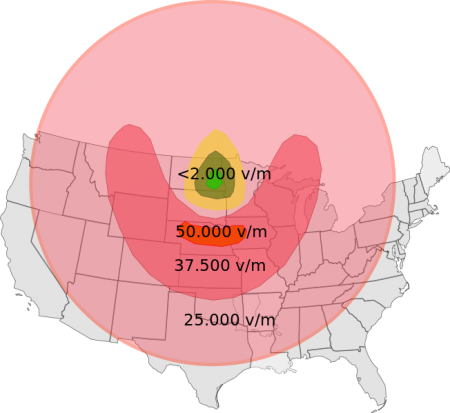In 1962, during the depths of the Cold War, the U.S. military exploded a nuclear weapon high above an atoll in the Pacific Ocean. Dubbed Operation Starfish, this exercise was part of a larger project to evaluate the impacts of nuclear explosions in space. The missile, launched from Johnson Island, 900 miles from Hawaii, was armed with a 1.4 megaton warhead, programmed to explode at 240 miles above the earth. It detonated as expected. What was not entirely expected was the magnitude of the resulting electromagnetic pulse (EMP).
The EMP was powerful enough to affect the electric grid in Hawaii, blowing out streetlights, and resulting in telephone outages and radio blackouts.
Dr. William Graham was active in the follow-up to the project, working out of the Air Force weapons lab in Albuquerque, New Mexico. After the blast, it was his job to understand the data collected, find out just what had happened in Hawaii, and what the defense implications were of this phenomenon. In a recent interview, Graham commented,
The effects were bizarre and almost entirely unanticipated. One effect was an electromagnetic pulse, but nobody knew it was going to be anywhere nearly as large it proved to be. They had all this data and they didn’t understand very much of it, including the EMPs that had been observed and the effects produced…all kinds of electrical disturbances were seen over 1000 kilometers away in Oahu. The Air Force brought in a bunch of us…and asked us to explain it. With the leadership of scientists from Los Alamos, we figured it out. It was a fairly subtle piece of physics. At that time we were worried it could be used as a precursor attack on the U.S. and suppress our retaliatory capability. Since the effect wasn’t really understood before 1962, our military systems hadn’t protected against it up to that point.
(Read the rest of the story here…)
